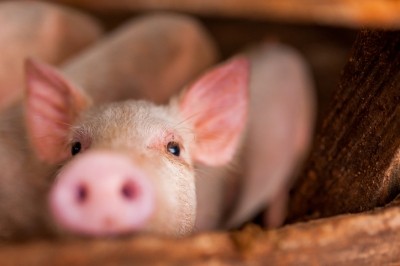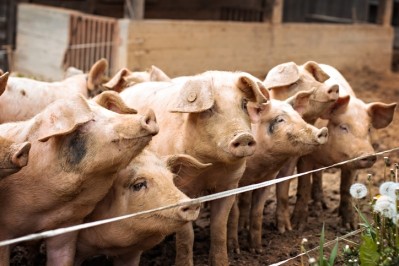Researchers find many factors lead to fatigued cattle syndrome, not just beta agonist use

During the summer of 2013, several cattle abattoirs reported mobility issues with cattle, as some animals were slow or hard to move, others became non-ambulatory or had strained breathing and a few cattle also sloughed one or more hoof walls, reported the researchers in the Journal of the American Veterinary Medical Association. However, when left overnight, some cattle recovered, they found.
The affected cattle had increased serum lactate concentrations and creatine kinase (CK) activity, they said. The syndrome appears similar to fatigued pig syndrome (FPS) which also was linked to several factors.
“Although anecdotal evidence generated concern that cattle fed the β-adrenergic receptor agonist zilpaterol hydrochloride were at greater risk of developing mobility problems, compared with cattle not fed zilpaterol, this condition is likely multifactorial,” the researchers wrote.
They said strategies to prevent this disorder are needed to protect the welfare of cattle.
The group recently was able to model the syndrome in cattle, including ones that had not been fed a beta agonist, said Dan Thomson, Jones professor of production medicine in the college of veterinary medicine and director of the beef cattle institute at Kansas State University.
“We would deduce from the research that we’ve done and the cases, we’d not think this is a direct effect of the beta agonists on the cattle, we think it’s a multifactorial issue that includes finish weight, heat stress, cattle handling practices and there is probably a genetic predisposition as well – cattle that are able to handle stress versus those that aren’t,” he told FeedNavigator.
Ties to beta agonists
When effects of the disease were first noted, there was a concern that it was connected to the use of beta agonists like ractopamine and zilpaterol, said Thomson. One product - Zilmax - was voluntarily pulled from the market because of the concerns.
“This all got kick-started by the beta agonists, and people wanted to jump in there and blame those, and while I’m not going to say they don’t have an effect, because when you use one you’re going to increase the carcass weight, but I don’t think it’s a direct effect, it’s an indirect effect,” he said. “It’s increasing the number of days the cattle are on feed and the out weights.”
The products were initially linked to the problem, because of the rapidity with which the use expanded through the cattle industry and the introduction of a stronger product on the market, he said. Additionally, there were already ties between use of the products and swine fatigue and the symptoms displayed in both syndromes are similar. In both it also has ties to heavier animals.
“There was a voluntary withdrawal of one product from the market and they have not reintroduced it to the market place, but Optaflexx, which is ractopamine, is still being fed and there’s a generic (version) that is being introduced to the market,” he added.
Ongoing research
However, cattle that have not been fed beta agonists can develop fatigued cattle syndrome, added researchers.
“Results of a study conducted by our laboratory group indicate that the serum lactate concentration and CK activity did not differ significantly among zilpaterol-fed steers, ractopamine-fed steers, and steers not fed β-adrenergic receptor agonists that were maintained in a typical feedlot setting with minimal exposure to stressors,” they said.
In the paper, one group of cattle that had members displaying the symptoms had been fed “high-concentrate finishing rations that included Zilpaterol,” said researchers. However, the steer in the second case came from a group of cattle that was reported to not have had the product. It did test positive for amounts of both zilpaterol and ractopamine, but how that happened is a matter of speculation, they added.
“Although the feeding of β-adrenergic receptor agonists might be a risk factor for [fatigued cattle syndrome] FCS, it is likely that the cause of FCS is multifactorial, and the simultaneous exposure of cattle to various, simultaneous, or stacked stressors is important for the development of FCS,” they stated. “Findings of this report suggested that cattle not fed a β-adrenergic receptor agonist can develop FCS in a manner analogous to FPS in pigs.”
Ways to prevent it
The best way to manage the disease, is to prevent it through the use of low-stress cattle handling, said Thomson. Other management changes that can be made to prevent the onset of symptoms include not shipping them during the hottest parts of the day.
“We are doing everything the best we can on a day-to-day basis for the cattle,” he said. “We have very good systems to see if cattle are responding in a positive or negative way to management practices.
Along with animal handling, two other components tie into the animal’s experiencing symptoms, he said. These include heat stress and animal size. While optimal weights for cattle can differ by breed and the animal’s frame, the average finishing weights have increased from 1,200-1,250 pounds to 1,400-1,500 pounds in recent years.
“The heavier out weights are going to continue, beef demand is going to continue, so we have to manage it,” said Thomson. “This is not a phenomena, this is something that if we pay attention and have proper shipping times, then all these things can prevent fatigue cattle syndrome from happening.”
Source: Journal of the American Veterinary Medical Association
Title: Description of a novel fatigue syndrome of finished feedlot cattle following transportation
DOI: 10.2460/javma.247.1.66
Authors: Daniel Thomson; Guy Loneragan; Jamie Henningson; Steve Ensley; Bhupinder Bawa
















